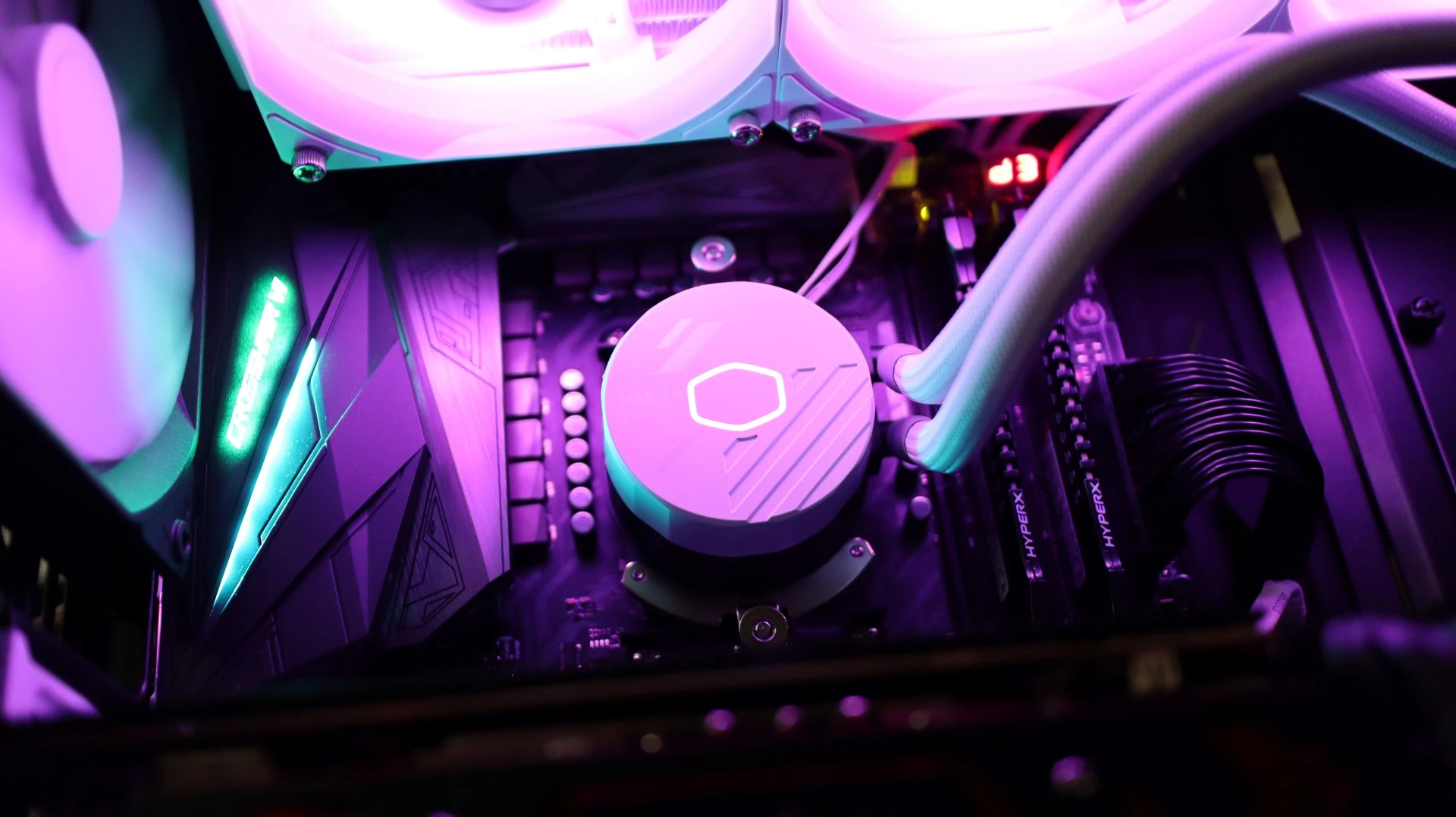Installation
As with most AIOs, the installation of the Cooler Master MasterLiquid 360L Core ARGB is quite easy. As DIY PC building seems to be getting more popular each and every day, the option of AIO liquid coolers is sure to entice those wanting to have a more advanced build, and easy installation will go a long way towards not scaring off first-time builders. As I mentioned when I covered the included accessories, Cooler Master has included all of the necessary mounting hardware for a large list of both Intel and AMD processors, but they have also included a physical installation guide and manual. I have seen quite a few companies move to digital versions of their product manuals, and while I appreciate their reduced waste, I still prefer a physical copy of installation instructions, and was happy to have them for this kit.
Our testing is performed with fans in a push configuration, so to get things started, I first needed to secure the fans to the radiator using the supplied screws. This is a very simple process, and as long as you line up the screws with the screw holes, you don’t even need a screwdriver to utilize the included thumbscrews.
One thing to keep in mind however, is the orientation of the fans with regards to their power and lighting cables. I mounted the fans to the radiator so that their power and lighting cabling would be between the fan frames and our motherboard tray. That allowed me to easily route them behind the motherboard tray for easier cable management.
From the factory, the 360L Core doesn’t have any AMD or Intel mounting hardware installed, so my first step of CPU block installation was to install the AMD mounting hardware for my Ryzen 7 1800X test system. This is a pretty trivial process that involves mounting two brackets to the ends of the pump housing with four included screws.
Next up is attaching the radiator to the top of our case. Just like attaching the fans to the radiator, attaching the radiator to the case is a simple task. Using the twelve included screws, simply align them with the appropriate mounting points on your case, and tighten. One thing I would like to make known is the relatively short tubing length between the radiator and pump housing. While adequate to allow the radiator to reach the top of our case, I would have liked a bit more tubing length to allow for a bit more flexibility with regards to mounting options. Additionally, the tubing on this cooler seems to be quite a bit stiffer than other AIOs I have reviewed, and it almost seems like the tubes were not lined up quite how they should be, resulting in the tubing looking a bit “off”. I also made sure to thread the fan power and lighting cables through my case’s cable management openings in preparation of wiring everything up.
Placing the cooler onto the CPU, I were able to first line up one side’s clip with the plastic AM4 mounting bracket and tighten it down slightly to remove a bit of slack. Then I simply tilted the cooler to be flat against the CPU and proceeded to latch and tighten the other thumbscrew. Unlike some other mounting methods, there are no screwdrivers required here – thumbscrews is all that is needed to get the cooler mounted to your CPU with just the power of your hands.
In order to power the MasterLiquid 360L Core’s pump, I needed to connect the 3-pin power connector to my motherboard’s CPU_Fan header. This will allow me to not only power on the pump, but monitor its speed. Next I connected the pump and fan’s 3-pin ARGB cables to the included wiring harness so that I could connect it to my ARGB controller.






